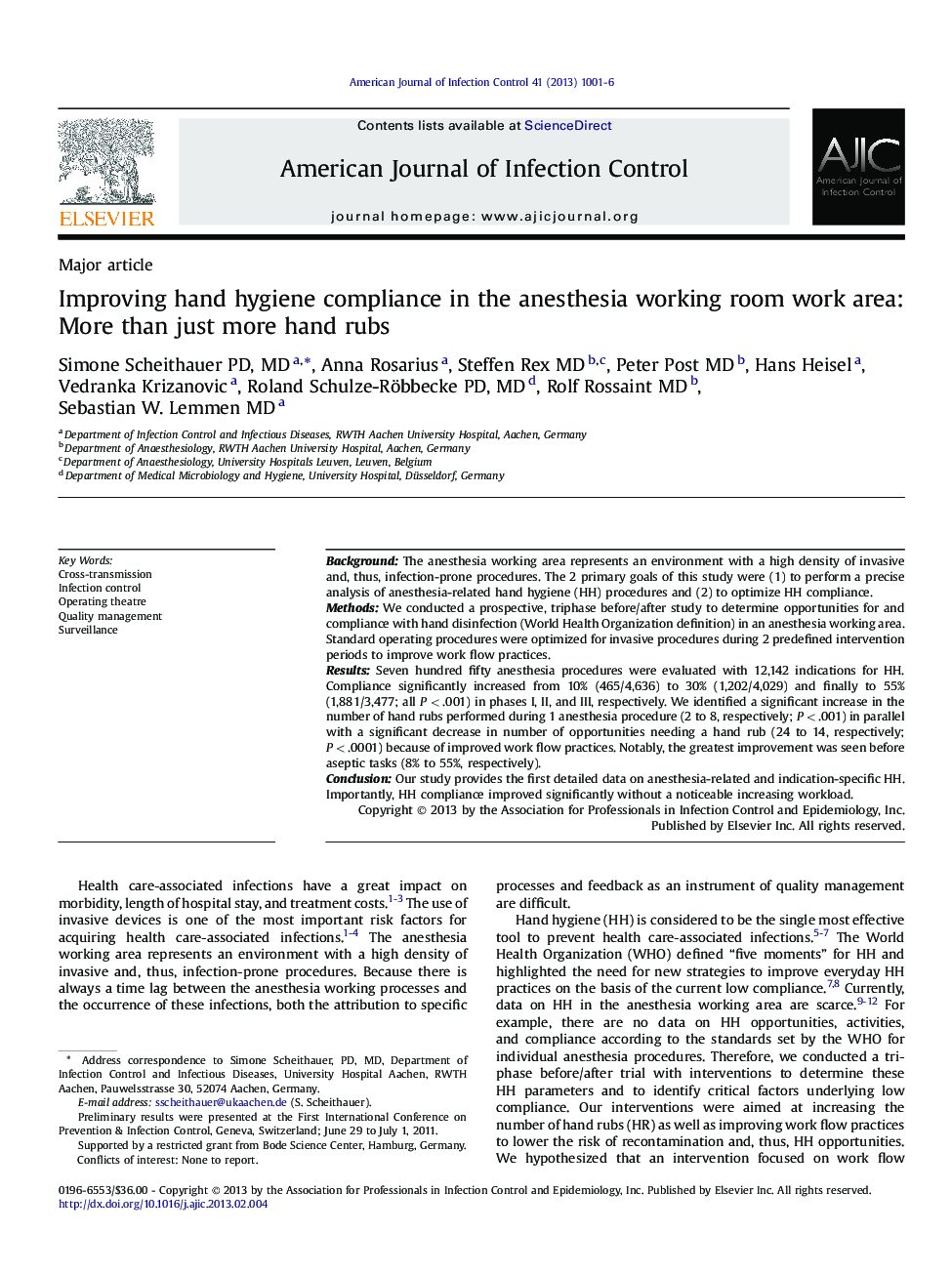| Article ID | Journal | Published Year | Pages | File Type |
|---|---|---|---|---|
| 2639544 | American Journal of Infection Control | 2013 | 6 Pages |
BackgroundThe anesthesia working area represents an environment with a high density of invasive and, thus, infection-prone procedures. The 2 primary goals of this study were (1) to perform a precise analysis of anesthesia-related hand hygiene (HH) procedures and (2) to optimize HH compliance.MethodsWe conducted a prospective, triphase before/after study to determine opportunities for and compliance with hand disinfection (World Health Organization definition) in an anesthesia working area. Standard operating procedures were optimized for invasive procedures during 2 predefined intervention periods to improve work flow practices.ResultsSeven hundred fifty anesthesia procedures were evaluated with 12,142 indications for HH. Compliance significantly increased from 10% (465/4,636) to 30% (1,202/4,029) and finally to 55% (1,881/3,477; all P < .001) in phases I, II, and III, respectively. We identified a significant increase in the number of hand rubs performed during 1 anesthesia procedure (2 to 8, respectively; P < .001) in parallel with a significant decrease in number of opportunities needing a hand rub (24 to 14, respectively; P < .0001) because of improved work flow practices. Notably, the greatest improvement was seen before aseptic tasks (8% to 55%, respectively).ConclusionOur study provides the first detailed data on anesthesia-related and indication-specific HH. Importantly, HH compliance improved significantly without a noticeable increasing workload.
